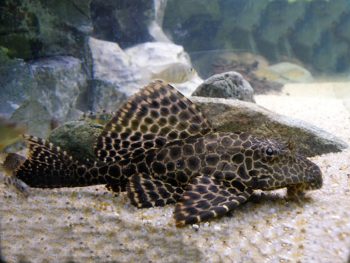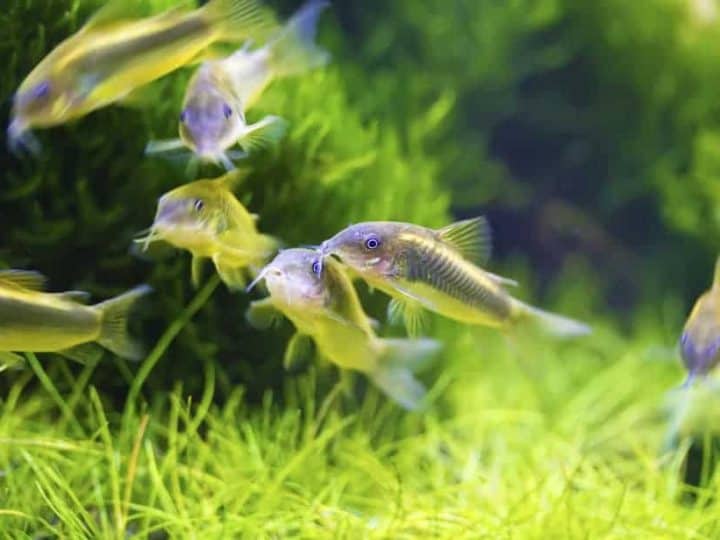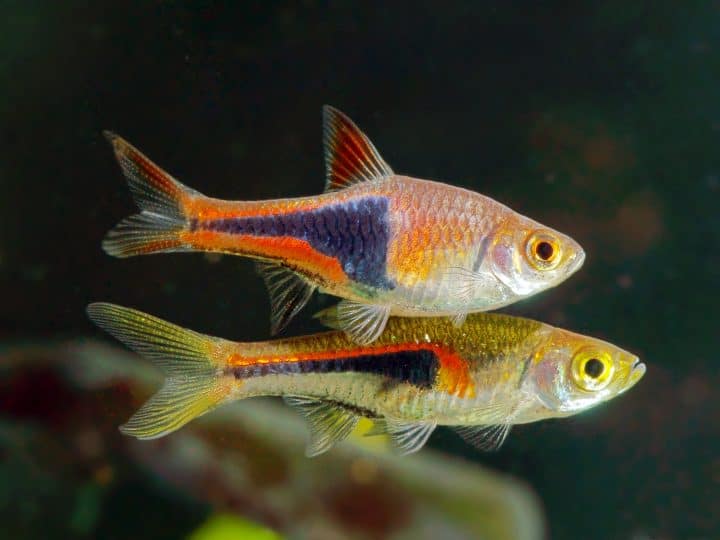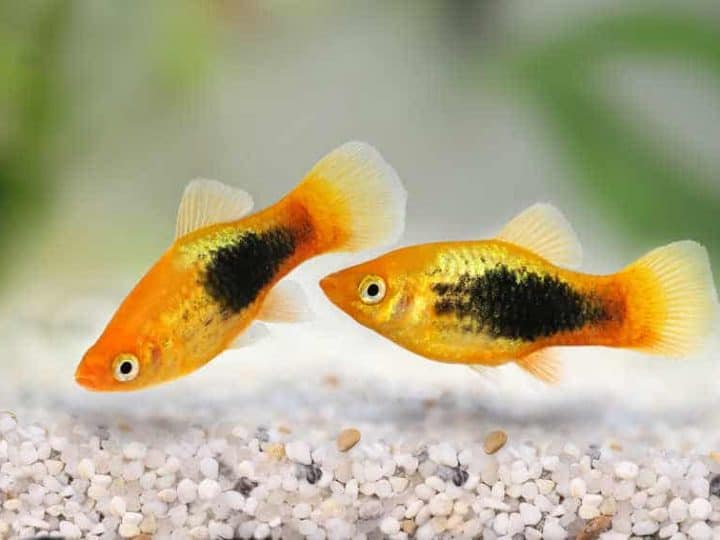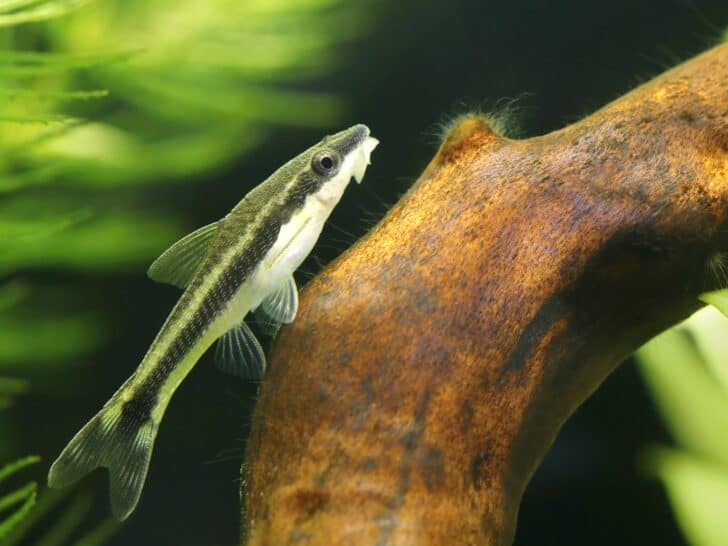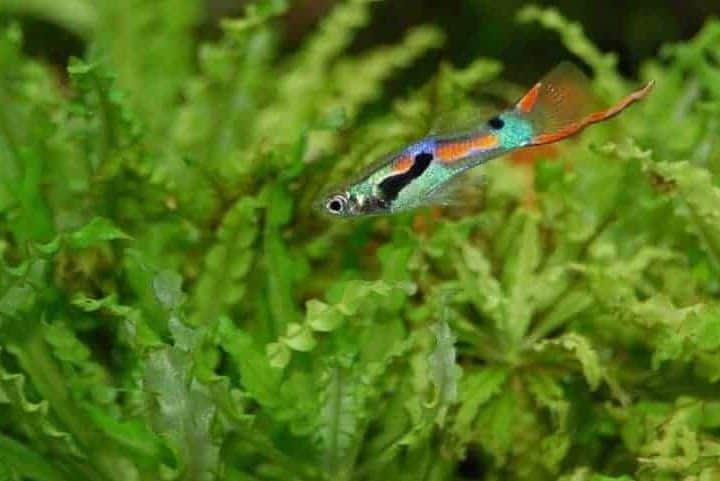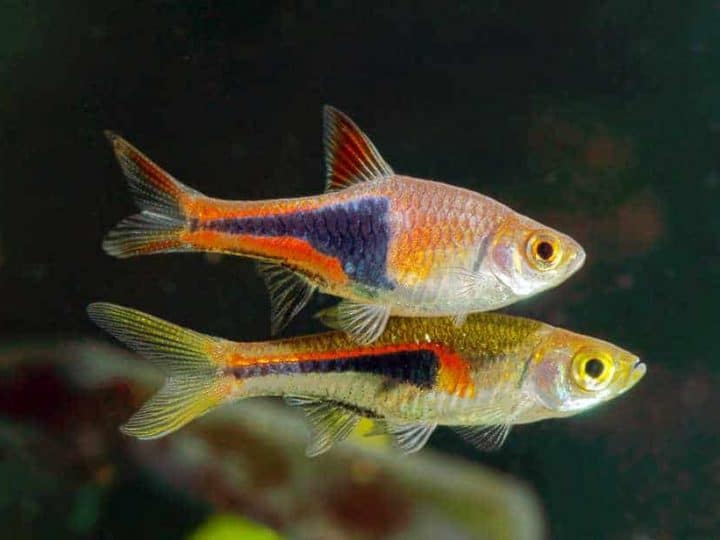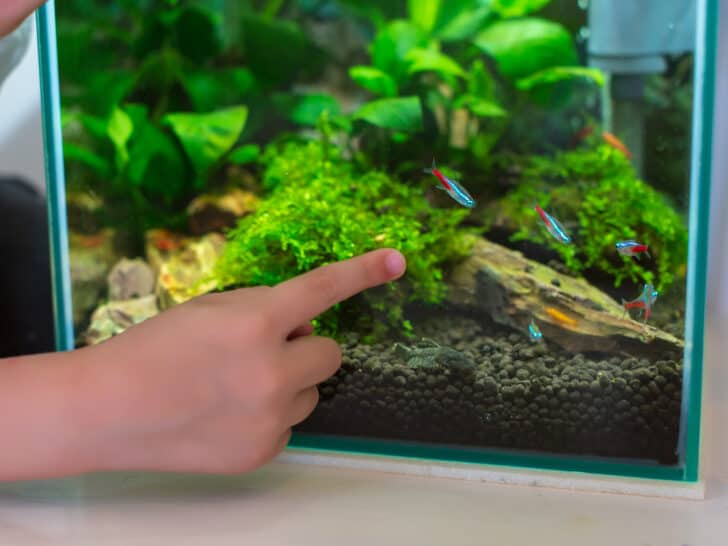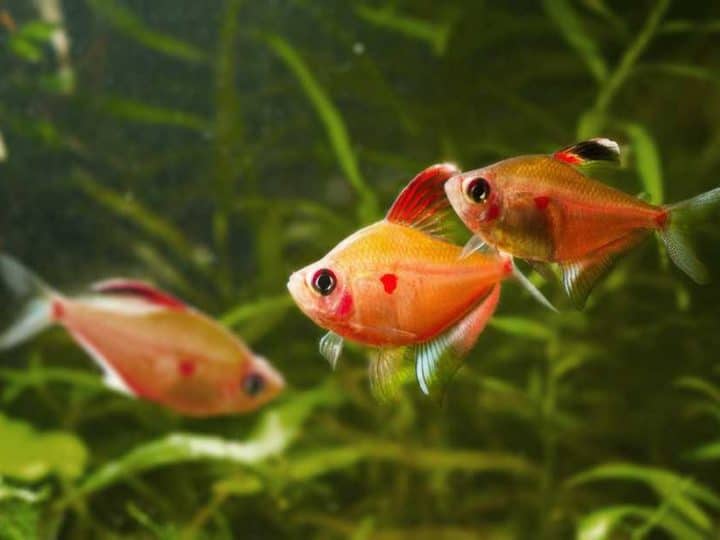Something I have a good deal of experience with is setting up blackwater aquariums. It might sound a little odd, but these are actually very popular types of aquariums, and are quite easy to maintain, so let me tell you how it’s done.
Quick Overview
Setting up a blackwater aquarium includes choosing the right tank, substrate, aquatic plants, fish, filters, lights, and more. One of the defining features is the relatively high acidity level of the water, and the murky appearance, which requires you to add a source of tannins into the water.
Keep reading to find out exactly what a blackwater aquarium is, how to set one up, and what fish are best suited for this type of tank.
What is a Blackwater Aquarium?
The blackwater aquarium is designed to recreate the natural habitats often found in lakes, floodplains, swamps, and rivers. Generally speaking, these are areas that see low levels of water flow, and are often isolated ponds or small bodies of water that do not receive much water exchange or nutrient exchange.
There are also many areas such as marshlands and other heavily vegetated, and usually shallow bodies of water, which don’t have much water flow or water exchange. Due to the limited amount of water flow and water exchange occurring in these areas, first, there usually aren’t many dissolved minerals in the water. The mineral content is generally very low.
However, there also tends to be a very high amount of organic compounds present, such as decaying plant matter and other organic compounds, which release various substances into the water, mainly tannins. This is why blackwater aquariums and such natural areas have dark water, sometimes yellowish, tea-colored, or even light brown water.
This stained water is a direct result of the higher levels of tannins present in the area. Once again, this water is generally quite acidic, usually well below a pH level of 7.0, and more often than not with a pH level below 6.5. This therefore means that only certain types of fish can thrive in these areas, aptly named blackwater fish.
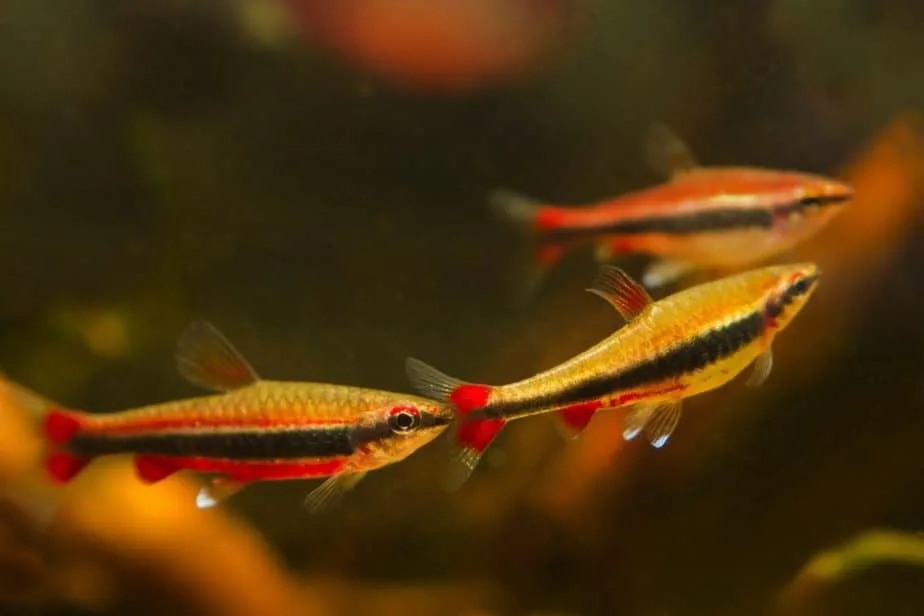
Although blackwater tanks may look very beautiful and are a total joy to set up, they can be a bit difficult to maintain, especially as far as that very unique water chemistry is concerned. You need to closely monitor the conditions to ensure that they are always ideal for the fish present. Let’s move on and talk about how to set up a blackwater aquarium.
How to Set Up a Blackwater Aquarium: Step by Step Guide
Let’s now go through a step-by-step guide on how to set up a blackwater aquarium. It all starts by choosing the right tank.
Step 1: Choosing the Right Tank
First, you need to choose the right kind of tank to set up your blackwater habitat in. Whether you go for a glass or acrylic tank is completely up to you, although many people recommend acrylic simply because it’s a bit easier to deal with.
However, the size of the tank is really up to you here, and it depends more on the type of fish you wish to put in the tank than anything else. Remember, a rule of thumb is that every inch of fish you have requires around 2 gallons of water to live comfortably.
Therefore, if you plan on just getting a few very small fish, you could go for a nano tank of just a few gallons. However, if you are planning to keep much larger fish, such as angelfish for instance, going for a much larger tank will be necessary.
Personally, we recommend going for a tank that is at least 20 or 30 gallons in size, and this will allow you to add a good deal of aquatic plants, decorations, and sizable fish.
Step 2: Adding Your Substrate of Choice
The next, and arguably one of the most important aspects of your blackwater tank setup is adding the right substrate. First and foremost, you never want to use marine gravel or sand.
These types of substrates, although often ideal for other types of tanks, contain a lot of aragonite and limestone. Together, these substances raise PH levels, and make water less acidic, which is the exact opposite of what you want for a blackwater tank.
You may use specialized freshwater gravel or sand, although these may also contain high levels of minerals, so you need to be very careful that you choose a freshwater sand or gravel substrate that has a low mineral content.
The best case here is using substrates that are very rich in organic substances and are pH neutral. Many clay substrates work just fine. If you want to ensure that the substrate and therefore the water remains fairly acidic, mixing in some aquarium planting substrates, such as dark aquarium soil, will go a long way.
One of the approaches that is proven to work best is mixing some aquarium planting substrates, aquarium soil, and a bit of clay, along with some peat moss. You then want to top that with about half an inch of sand to prevent everything from floating away. This should provide your tank with the perfect substrate to plant blackwater plants, and to maintain the right water parameters.
Step 3: Add Sources of Tannins Into the Water
Once again, one of the defining features of a blackwater aquarium is that it is a bit murky and acidic, which is thanks to an abundance of plant matter. To create and maintain these water conditions, you need to add sources of tannins into the water, ones which will release slowly over time. You want to make sure that the tannin sources are slow release, because if they aren’t, water changes will remove too many tannins from the water at once.
There are a few different sources of plant tannins that you can add into the water, with driftwood being one of the easiest ones. Real aquarium driftwood provides you with a slow release tannin source for several months, or sometimes even for years.
Large pieces of darker wood, such as malaysian or mopani driftwood tend to work best. They are quite dense and sink quickly, therefore making it easy to aquascape inside of your tank. Try not to use types of wood that are light in color and decay quickly, as they don’t last long and don’t have many tannins in them anyway.
Another good source of tannins for a blackwater aquarium are Indian almond leaves. Many people choose to just scatter some of these leaves across the bottom of their tank, and you don’t even need very many, as they are very strong. If the leaves don’t want to sink to the bottom of the tank, boil them and tear them up a little bit. These usually last for about a month before they require replacement.
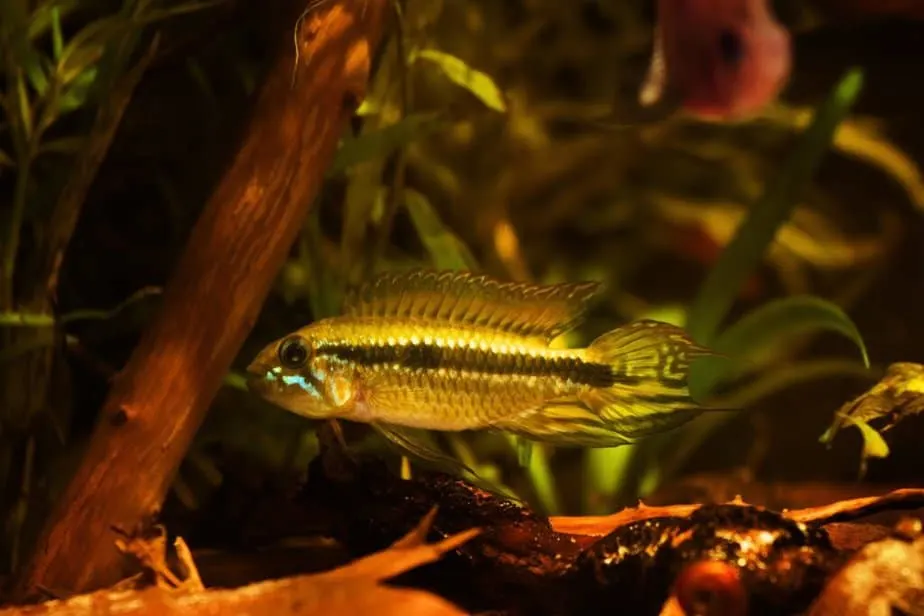
As already mentioned above, peat is a good source of tannins for the water, which means that you should mix it into your substrate as discussed previously. The other option at your disposal here is to simply use a blackwater aquarium conditioner specifically designed to add these substances into the tank.
Step 4: Add Aquatic Plants (and Decorations) Into the Tank
If you already have sources of tannins in the water, you don’t necessarily need live plants, but let’s face it, every aquarium looks better with live plants. Fish love live plants, it makes tanks look more natural, and plants do add some tannins into the water.
The cool thing about blackwater tanks is that unlike regular tanks, you really don’t need to remove decaying plant matter, because this decaying plant matter is exactly what adds those valuable tannins into the water.
What you do need to remember however is that with tanks of this nature, there is usually a low light level combined with high pH levels, which means that you need to choose the right kinds of plants.
The plants need to be able to survive in relatively acidic and low light conditions. Some of the best options here include anubias, cryptocoryne, java fern, java moss, amazon swords, and pygmy chain swords.
Step 5: Set Up The Filtration System
Another important aspect of a blackwater tank is the filtration system. Now, this is where blackwater tanks differ greatly from regular tanks. Inside of regular tanks, you usually always want to have a filter that engages in chemical filtration, as this helps to remove a variety of colors, odors, and other substances from the water, such as those tannins.
Of course, you don’t want this, because you want that dark color and those tannins in the water. Therefore, while you do need a good aquarium filter, you don’t want any activated carbon or any other kind of chemical filtration inside of it. Rather, you want to replace that activated carbon with some more peat or any other such filtration media.
What it really comes down to here is that unlike with other aquariums, the blackwater tank really only requires mechanical filtration to remove fish waste and biological filtration to remove ammonia. Personally, we recommend going for a good canister filter like this one, and this will allow you to adjust the exact type of media you want.
Step 6: Choose an Appropriate Lighting System
Blackwater environments in real life generally have fairly low light conditions, most often because there is a good deal of plant coverage above, and the dark water also blocks light.
That said, if you have live plants in your tank especially, you’ll need a decent lighting system. You don’t need anything too strong, but a basic aquarium light is still required.
Step 7: Add Appropriate Fish Into the blackwater Aquarium
The final step here is to add the right kind of fish into your tank. Remember that these need to be fish that are suitable for low light conditions and acidic water. Further below, you’ll find a short guide on the best type of fish to add into a blackwater tank.
A Note on Maintaining Blackwater Tanks
One of the most important notes on maintaining blackwater tanks is that you really can’t use regular tap water. Instead, you need to use distilled water or reverse osmosis water. You don’t have to use pure distilled or reverse osmosis water, but at least 50% combined with your tap water.
The reason for this is because when you do partial water changes, tap water contains way too many minerals and will raise the mineral content of that water, while simultaneously increasing the acidity. You need both the carbonate hardness and the general hardness level of the water to be under 5 degrees, which is very low. You need to maintain those tannins.
Best Fish for a Blackwater Aquarium
Not all types of fish are suitable for blackwater tanks. Choosing the right kind of fish is therefore very important. First, this means choosing fish that can survive in relatively low pH levels, or in other words, in acidic water.
You also need to have fish that are fine living in somewhat low light conditions, as well as in water that is kind of murky. If you plan on adding more than one type of fish into the tank, they also need to be compatible with each other.
Some of the best types of fish to add into a blackwater tank include tetras, rasboras, hatchetfish, discus fish, gouramis, Corydoras, and dwarf cichlids.
Conclusion
As you can see, setting up a blackwater tank does take a bit of work and know-how. However, once you have all of the proper equipment and you know what you are doing, maintaining such a tank should not be a huge challenge.
Just remember the most important point, which is maintaining those tannins and acidity levels. We hope that our guide has provided you with all of the information that you need to successfully set up a blackwater tank.

